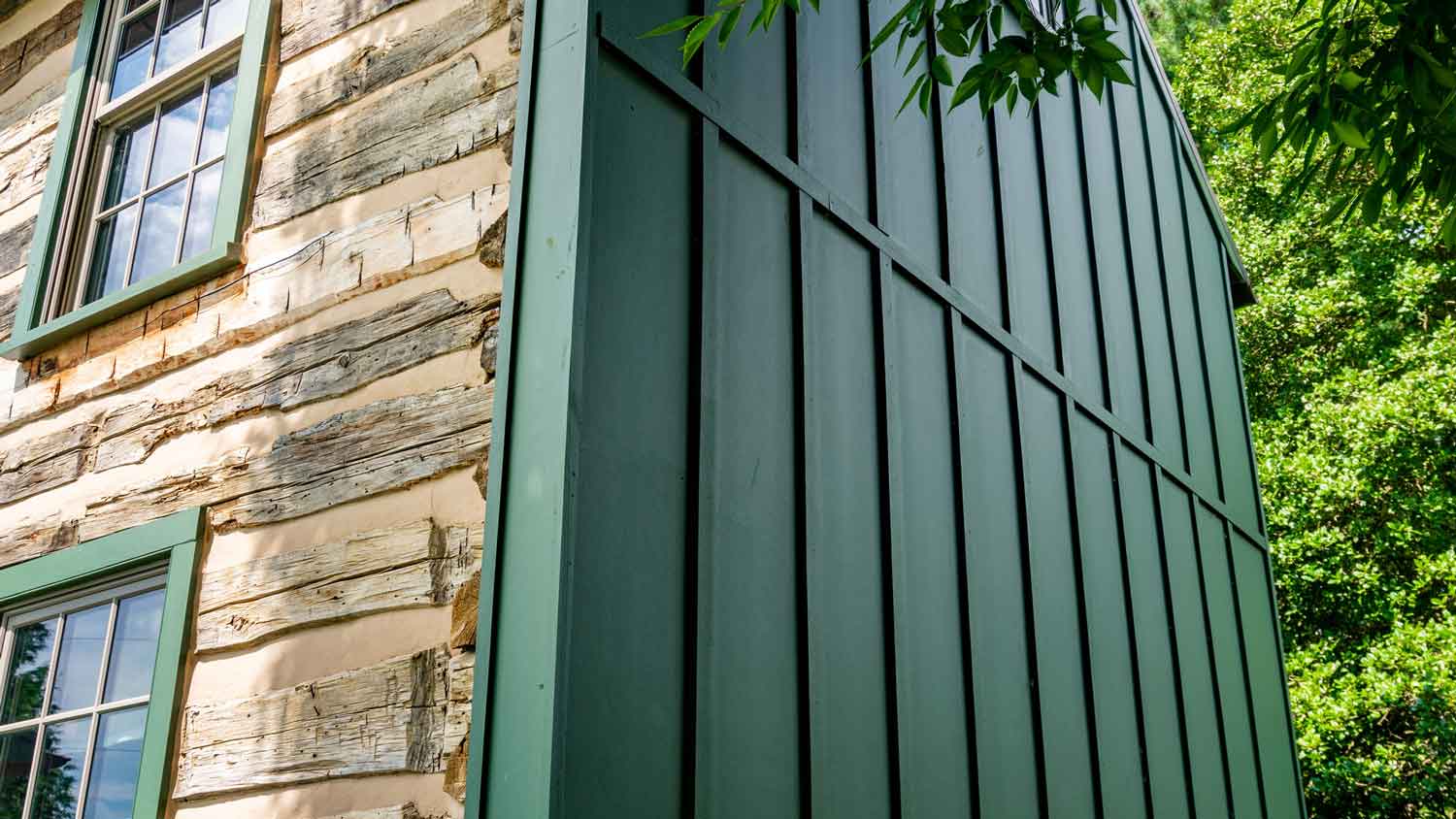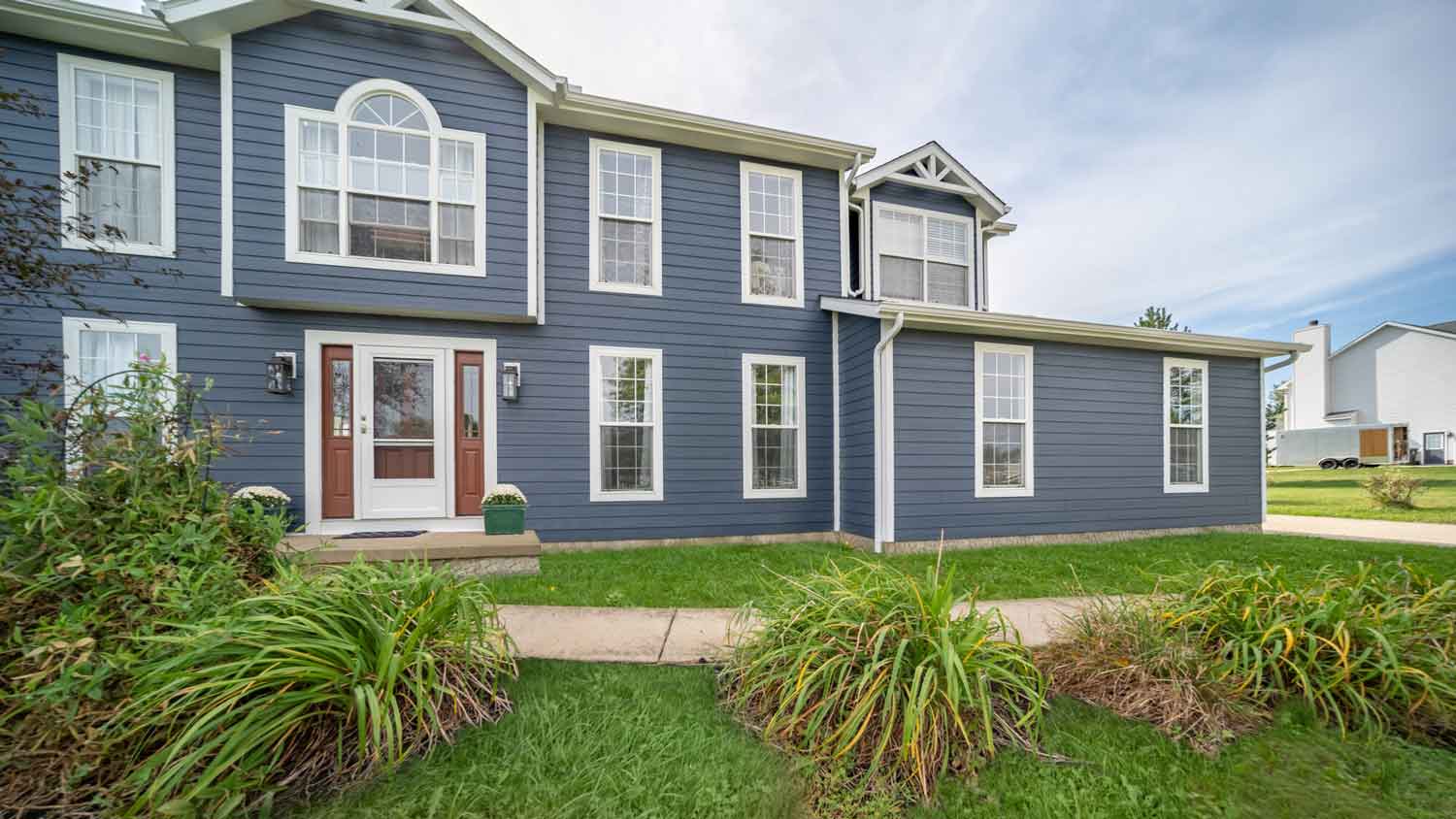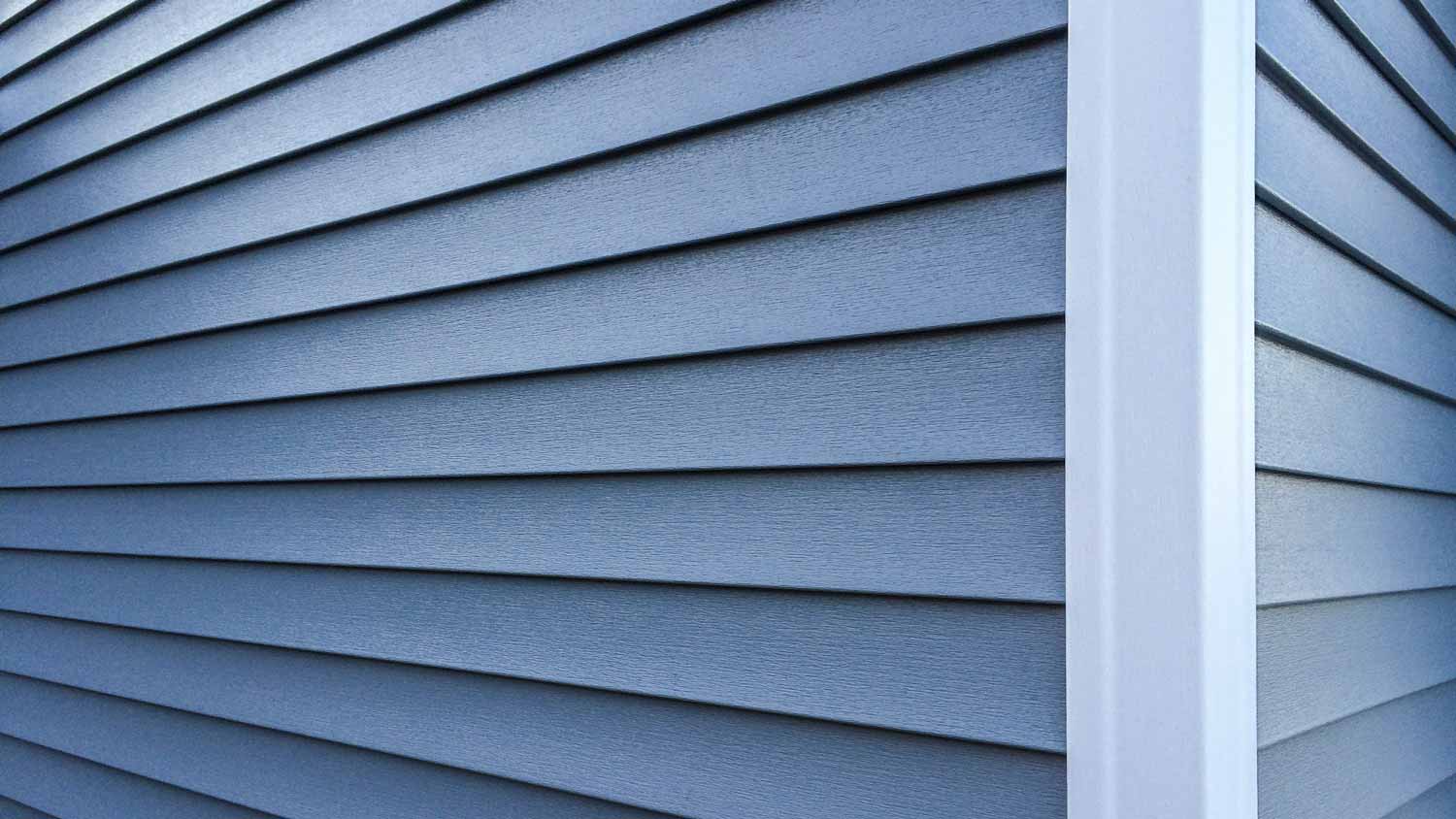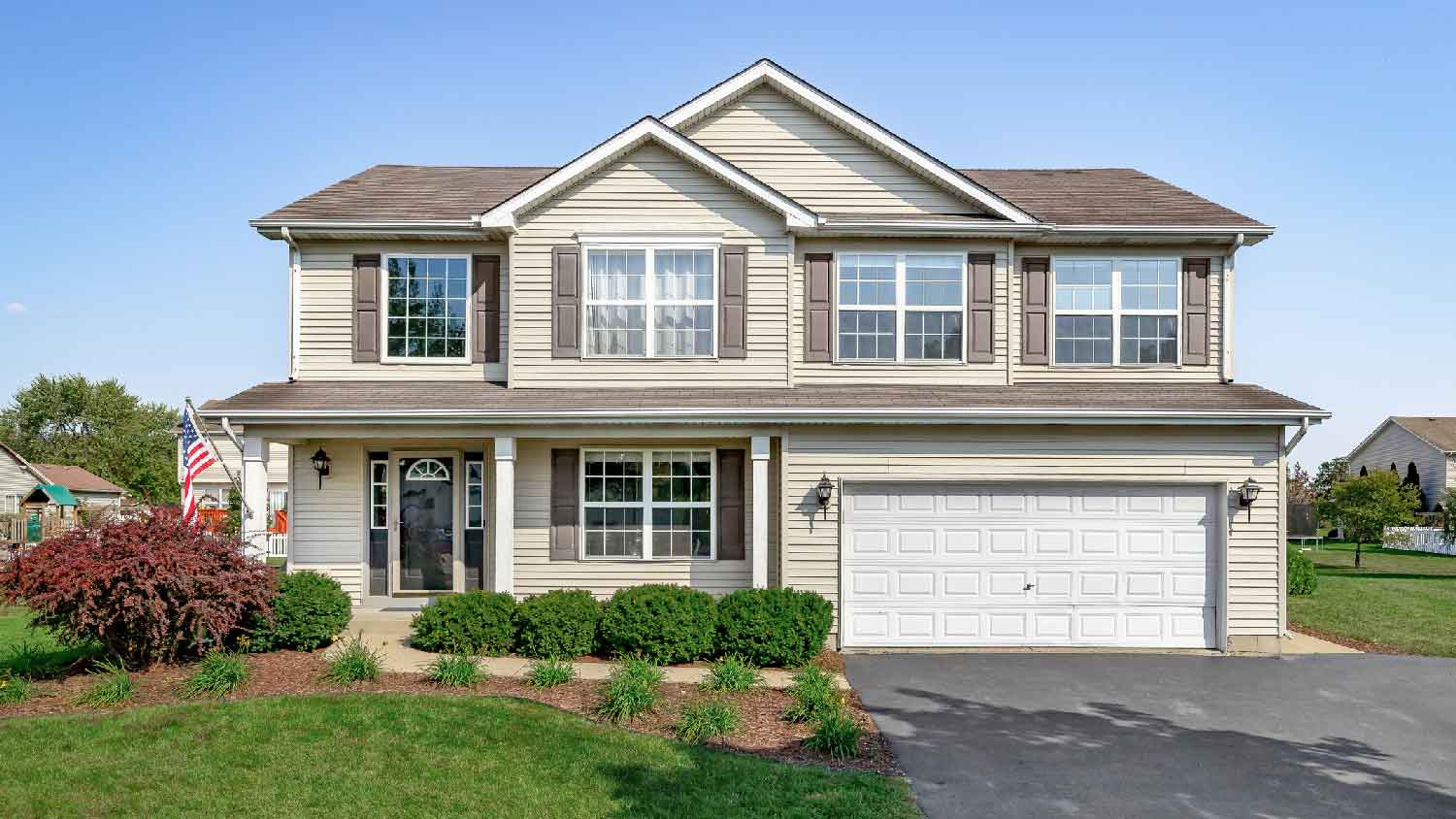
Considering a home exterior makeover with cladding? Find out the average house cladding cost to help you plan your budget.
Find out if the differences make an impact


Hardie board is a lightweight fiber cement option.
Traditional cement boards are less expensive than Hardie board siding.
Both options are suitable as a wood siding alternative.
Hardie board and cement board siding are renowned for being durable, versatile, and popular alternatives to wood siding. It can be fashioned into any number of appearances, ranging from traditional siding, stucco, and reveal panels to create a wood-like appearance without the high cost. If you've decided on fiber cement siding, you'll want to compare two options—Hardie board vs. cement board—to find the right fit for your style.
When taking on this project, expect questions only a pro can answer. With our network of local pros, you'll get the job done and your questions answered—without the hassle and stress of doing it yourself.
Between Hardie board vs cement board siding, the differences aren't that vast as both provide the same benefits as a wood alternative siding. There are two major differences between the two for homeowners to consider: Hardie board is more lightweight and cement board is less expensive.
If you're learning how to install fiber cement siding yourself, Hardie board might be a better option as it would be easier to manage compared to traditional cement board. However, if you're looking to stay within budget, traditional cement board offers the same benefits for a fraction of the price, whether you DIY it or hire a local siding contractor.
As a popular brand, Hardie board products tend to be more expensive. Hardie board siding ranges in price between $6 to $13 per square foot while traditional fiber cement siding cost ranges between $4 to $6 per square foot.

Created by JamesHardie®, Hardie board siding is a brand of fiber cement siding known for its superior durability. The combination of sand, cement, and cellulose fibers results in a siding material that has the warm and natural aesthetic of wood, with an array of color options that will fit into any color scheme.
Hardie board is one of the most popular types of cement siding with more than 8 million American homes featuring this siding. Despite its ubiquity, the range of design choices gives each house its own unique look.

Despite its similarities to traditional cement board, Hardie board features its own advantages and disadvantages for homeowners.
Water resistant: Regardless of the level of exposure, Hardie Board siding won't suffer from warping or misshaping, like wood does when exposed to moisture.
Sunlight resistant: Hardie board siding is resistant to UV radiation from sunlight, unlike wood which can warp with regular exposure to sunlight.
Fire resistant: Installing Hardie board siding on your home substantially reduces the risk of house fires due to its impressive fire resistance.
Pest resistant: Hardie board siding is impervious to these pesky bugs, so its life span remains intact.
Durable: With a 30-year warranty, this material is built to endure between 30 and 50 years depending on how well you maintain it.
Aesthetically pleasing: Hardie board siding provides an aesthetically pleasing alternative to real wood and comes in an array of shapes and hues.
Low maintenance: With minimal upkeep, Hardie board siding remains in excellent condition and only needs a periodic cleaning rather than any staining, sealing, or repainting.
Expensive: Hardie board comes with a hefty purchase price and is one of the most expensive siding options on the market.
Difficult to install: Even though it's lighter than traditional cement board, it's still a weighty material that poses installation challenges.
With its durability and minimal upkeep, fiber cement siding is an excellent option for protecting the outside of residential and commercial buildings. Its composition of cellulose fibers, cement, and sand allows it to last for decades. Many manufacturers offer warranties of up to 50 years, a demonstration of its extended life span.
Not only does fiber cement board have a minimal maintenance requirement, but it is also fireproof, insect-proof, and designed to withstand natural disasters. On top of that, its energy-saving features contribute to home insulation.

Fiber cement siding continues to be a popular alternative for homeowners looking for a wood-like appearance without the challenges that come with it.
Durable: Cement board is highly coveted for its longevity, as it can last as long as 50 years and does not decay or require frequent maintenance. It also holds up admirably in the face of natural disasters.
Water resistant: Cement board is known for keeping your home safe from the elements, including rain and snow.
Fire resistant: The risk of fire is greatly reduced when opting for cement board.
Pest resistant: Insects are much less of a problem with cement board compared to using a wood siding, keeping your home free from pest damage.
Aesthetically pleasing: Cement board features a wide range of styles and colors for homeowners to choose from to meet their aesthetic for great curb appeal.
Less expensive: While fiber cement is an expensive siding product, it is less expensive compared with Hardie board.
Heavy: As a heavy material, it poses issues with installation that can make the process more difficult.
Brittle: Cement board can be brittle, which results in chipping or cracking that requires maintenance.
Dusty when cut: When installing cement board siding, it will need to be cut to fit. While cutting, the material is quite dusty and that dust contains a human carcinogen that can pose health risks if proper protective measures aren't taken.
From average costs to expert advice, get all the answers you need to get your job done.

Considering a home exterior makeover with cladding? Find out the average house cladding cost to help you plan your budget.

The cost of Hardie board siding depends on the size of your home and the style and color you choose. Get a more accurate estimate with our in-depth cost guide.

Not sure how much vinyl siding costs? To prepare your budget for an upcoming siding project, read on to learn about average supply and labor costs.

Knowing how many pieces of siding are in a square can help ensure you order the right amount of siding for a smooth, problem-free installation.

How much does clapboard siding cost? This guide reviews cost factors, prices per square foot, and more to help you plan your budget.

While Dutch lap is a more detailed type of siding, clapboard is often less expensive and more widely used. If you're weighing these options against each other, our guide can help you decide which type makes the most sense for your home’s facade.